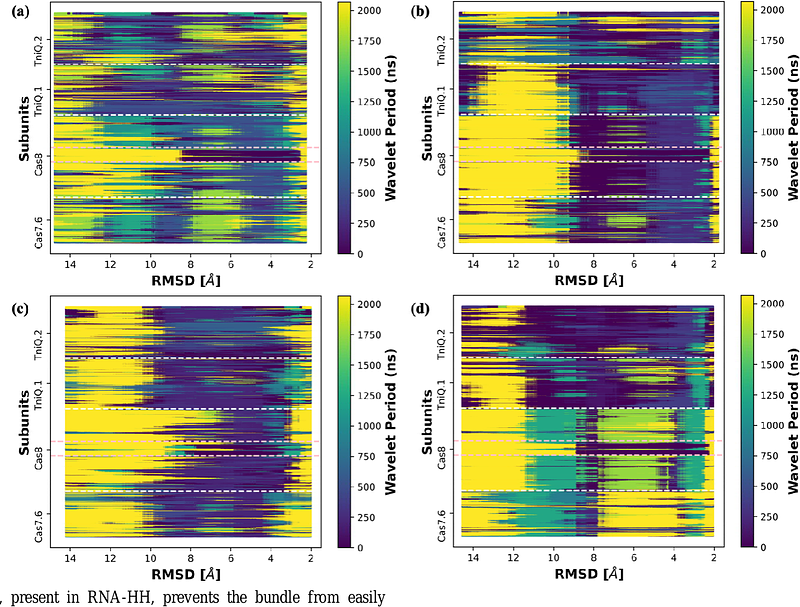Unveiling Cas8 Dynamics and Regulation within a transposon-encoded Cascade-TniQ Complex

Unveiling Cas8 Dynamics and Regulation within a transposon-encoded Cascade-TniQ Complex
Patel, A. C.; Sinha, S.; Arantes, P. R.; Palermo, G.
AbstractCascade is a class 1, type 1 CRISPR-Cas system with a variety of roles in prokaryote defense, specifically against DNA-based viruses. The Vibrio Cholerae transposon, Tn6677, encodes a variant of the type 1F Cascade known as type 1F-3. This Cascade variant complexes with a homodimer of the transposition protein TniQ and leverages the sequence specificity of Cascade to direct the integration activity of the heteromeric transposase tnsA/B, resulting in site-specific transposition of Tn6677. We desire to uncover the molecular details behind R-Loop formation of Cascade-TniQ Due to the lack of a complete model of Cascade-TniQ available at atom-level resolution, we first build a complete model using AlphaFold V2.1. We then simulate this model via classical molecular dynamics and umbrella sampling to study an important regulatory component within Cascade-TniQ, known as the Cas8 bundle. Particularly, we show that this alpha-helical bundle experiences a free energy barrier to its large-scale translatory motions and relative free energies of its states primarily dependent on a loop within a cas7 subunit in Cascade-TniQ. Further, we comment on additional structural and dynamical regulatory points of Cascade-TniQ during R Loop formation, such as Cascade-TniQ backbone rigidity, and the potential role TniQ plays in regulating bundle dynamics. In summary, our outcomes provide the first all-atom dynamic representation of one of the largest CRISPR systems, with information that can contribute to understanding the mechanism of nucleic acid binding and, eventually, to transposase recruitment itself. Such information may prove informative to advance genome engineering efforts.


